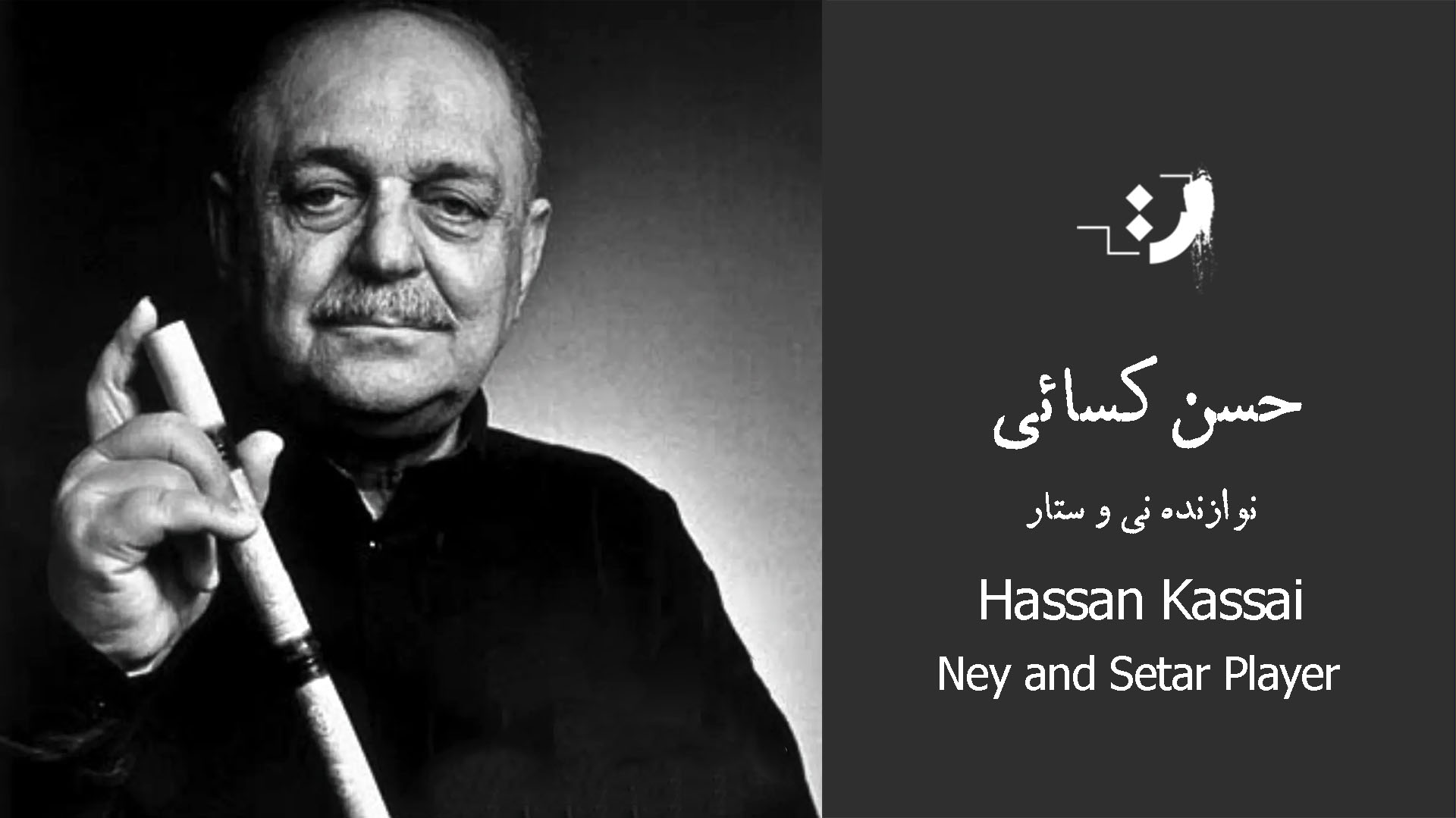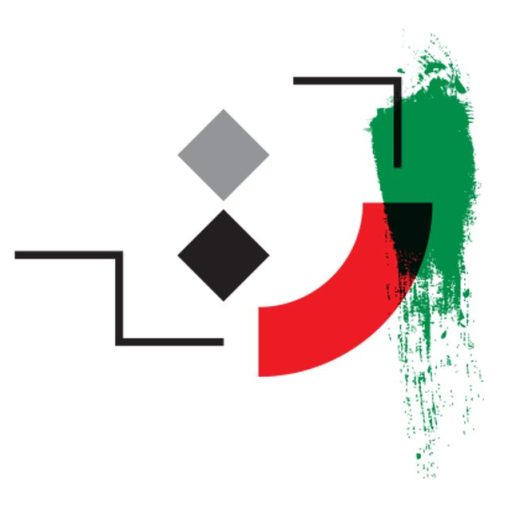Hassan Kassai

Biography
Biography of Hassan Kassai
Name: Seyed Hassan Kassai
Date of Birth: September 25, 1928 (Mehr 3, 1307)
Place of Birth: Isfahan, Iran
Date of Death: June 14, 2012 (Khordad 25, 1391)
Profession: Musician, Ney and Setar Player
Early Life
Hassan Kassai was born into a merchant family in Isfahan. His father, Seyed Javad Kassai, was a well-known trader who had a deep passion for music. As a result, their home became a gathering place for renowned musicians of the time, such as Seyed Hossein Taherzadeh, Jalaleddin Taj Isfahani, Akbar Khan Nowruzi, and Jaleel Shahnaz. These early musical encounters sparked Kassai’s interest in music, and he was particularly drawn to the ney (Persian reed flute) after hearing a street musician play it.
His father introduced him to Mehdi Navayi, a master of the ney, marking the beginning of his formal musical training.
Musical Education and Influences
Kassai studied Persian classical music under Taj Isfahani and Adib Khansari, learning the intricacies of Persian melodies and maqams. He learned the ney under Mehdi Navayi and frequently attended classes by the legendary musician Abolhassan Saba during his visits to Tehran.
After the passing of Mehdi Navayi, Kassai refined his ney-playing skills by collaborating with other Isfahani musicians. He was the first to play the ney in full modal accuracy in various Persian classical modes such as Chahargah, Esfahan, Nava, and Rast Panjgah, demonstrating his mastery of tuning and modulation.
His setar playing was also highly regarded, influenced by Jalil Shahnaz’s tar playing and Abolhassan Saba’s setar techniques.
Artistic Career
Kassai started playing the ney at the age of 12 and became a student of Mehdi Navayi at 13. By the age of 20, he gave his first solo ney performance in the Homayoun mode at the Isfahan Theater. The following year, he composed his famous piece “Salam” in Chahargah mode, which later became one of the most celebrated pieces in Persian classical music.
In 1949, Kassai introduced the ney to orchestral performances, starting with the Radio Army Orchestra of Isfahan. He later collaborated with various radio orchestras led by prominent musicians such as Abolhassan Saba, Hossein Yavari, Habibollah Badiei, Mohammad Mirnaghibi, and Homayoun Khorram.
In 1956, he was invited by Davoud Pirnia to join the Golha program, a prestigious Iranian radio program dedicated to Persian classical music. He remained a key contributor until 1979.
International Recognition
Starting in 1967, Kassai’s influence expanded globally. His ney performances were recorded and distributed internationally, including a vinyl record in the Shoor and Mahoor modes produced by CBS France in 1975.
He participated in the Shiraz Arts Festival and had musical exchanges with world-renowned musicians, including Ravi Shankar, Sharan Rani, and Bismillah Khan.
In the 1980s, he traveled to Germany, England, France, and the Netherlands, performing on radio programs and introducing Persian ney music to Western audiences. In 1989, a sculpture of Kassai was installed in the Gallery of World Art Masters in London.
Post-Revolution Career
After the 1979 Iranian Revolution, Kassai faced restrictions on his musical activities. His last official performance on Iranian radio was with Jalil Shahnaz, Mohammad Reza Shajarian, and Jahangir Malek. By 1982, the Isfahan Radio archives were destroyed, and Kassai was dismissed from his position at Iranian National Radio and Television, losing his income.
Despite these setbacks, he continued his international performances and participated in the Ney Festival in Tehran in 1991, which revitalized his career. In 1996, he traveled to the United States and Canada, performing at literary and musical events. The Washington Society of Iranian Music Lovers organized a tribute concert for him in 1997, thanks to the efforts of Mohammad Reza Lotfi.
He was awarded Iran’s First-Class Order of Culture and Art in 1999 and was honored as an Outstanding Figure in Music in 2002.
His contributions to Persian music were compiled in the book “From Music to Silence”, published by his son, Mohammad Javad Kassai, in 2002.
Legacy and Influence on Ney Playing
Kassai revolutionized ney playing techniques by refining the instrument’s tone clarity and tuning accuracy. Before his innovations, the ney had a harsh and inconsistent sound, but he developed methods to produce a pure and resonant tone. His advancements helped establish the ney as an essential instrument in Persian classical music.
His ney solos and collaborations with artists such as Jalil Shahnaz, Ali Tajvidi, Ahmad Ebadi, Taj Isfahani, and Adib Khansari helped integrate the ney into orchestral performances, leading to its inclusion as a formal instrument in Persian classical ensembles.
His teaching and recordings influenced generations of ney players, and his “Radif for Ney”, recorded at age 80, remains an essential educational reference for ney students.
Musical Style and Philosophy
Kassai believed that true mastery of music came from originality and creativity, rather than blind imitation. He stated:
“Imitation never leads to greatness. It is like a photocopy—no matter how well-made, it will never have the value of the original. Young musicians should strive to develop their own artistic voice.”
He also believed that music should be a balance between technique and creativity, criticizing the dominance of technical skills over emotional depth in modern performances.
Notable Works
Some of Kassai’s most famous recordings include:
- “Salam” (Chahargah mode)
- “Nay-e Ney” (with tombak by Amir Nasser Eftetah)
- “Raz-e Ney” (with tombak by Amir Nasser Eftetah)
- “Az Karan-e Zayandeh Rud” (with tombak by Amir Nasser Eftetah)
- “Nay-e Jan”
- “Yaran-e Zayandeh Rud” (with vocals by Taj Isfahani)
- “Be Esfahan Ro” (with vocals by Taj Isfahani)
- “Shaakhe Gol 6, 9, 16” (with vocals by Gholamhossein Banan)
- “Goftegoo-ye Ney va Oud” (with oud by Shahram Mirjalali)
- “Dokhtar-e Gol Foroosh” (with vocals by Ali Jahandar)
- “Ghessehaye Eshgh-e Majnoon”
- “Ashki Baraye Golha”
Death and Burial
After suffering from illness, Hassan Kassai passed away on June 14, 2012. Due to restrictions on burials after dark, his funeral was held at night in silence. He was buried near the tomb of Taj Isfahani in Takht-e Foulad Cemetery in Isfahan, in accordance with his wishes.
Tributes and Recognition
Hassan Kassai was widely admired for his artistic and human qualities, earning the respect of fellow musicians and scholars.
- Mohammad Reza Lotfi, a master tar player, stated:
“I do not allow myself or anyone else to criticize Hassan Kassai. His work is beyond our evaluation—his greatness, insight, and passion for Iran’s music are unparalleled.”
- Houshang Ebtehaj (poet) wrote:
“The pain of separation can be best expressed through the sound of Kassai’s ney.”
- Parviz Yahaghi (violinist) called him:
“The most distinguished master in the history of world music.”
Hassan Kassai remains one of the greatest figures in Persian classical music, and his legacy as a ney virtuoso continues to inspire musicians worldwide.
- Birthday: September 25, 1928
- Death: June 14, 2012
- Birthplace: Isdahan, Isfahan, Iran
Ney and Setar Player
